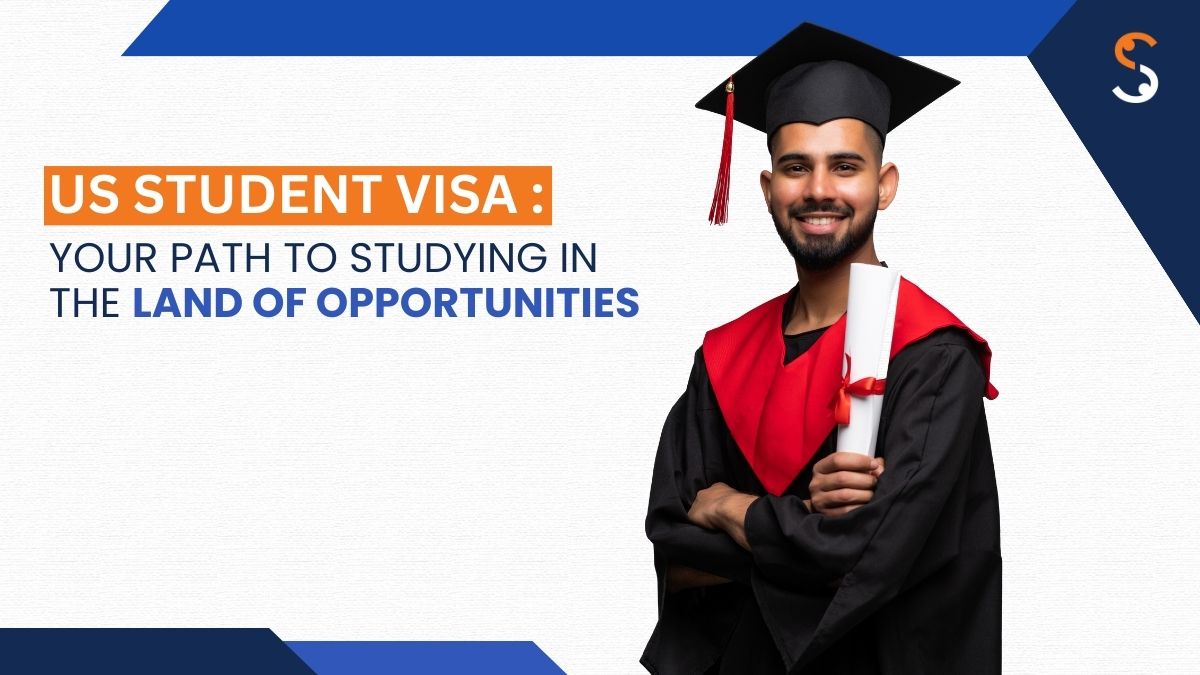
How to Get a USA Student Visa from India?
The United States is a world leader in higher education, with some of the top universities and colleges in the world. Studying in the USA offers international students a chance to receive a high-quality education, gain valuable skills and experience, and network with students and professionals from all over the globe.
However, to study in the USA, international students must obtain a student visa USA. A US student visa allows foreign nationals to enter the US and study at an accredited educational institution for a period of time.
Therefore, we are here to guide you through the visa application process, student visa USA requirements, and the essential details so you can make informed decisions towards your educational goals.
But first, let’s address two crucial questions: Why study in the USA, and why is a US student visa so important?
Why Study in the USA?
There are many reasons why international students choose to study in USA. Here are a few of the most popular reasons:
- The US has some of the best universities and colleges in the world, many of which are ranked in the top 100 globally.
- The US offers a wide range of educational options to students, from undergraduate degrees to graduate degrees and professional programs.
- The US is a leader in research and development, and many US universities offer students opportunities to participate in cutting-edge research projects.
- The US is a very diverse country, and international students can learn from and interact with students and professionals from all over the world.
- The US has a strong economy and a large job market, and many international students find jobs in the US after completing their studies.
What is the benefit of USA student visa?
A student visa USA is important because it allows international students to legally enter and study in the US. Without a student visa, international students are not allowed to study in the US.
The US Department of State issues the visa and is valid for the duration of the student’s program, plus an additional 60 days.
A US student visa also provides students with several benefits, including:
- The ability to live and study in the US for the duration of their studies
- The ability to work part-time on campus
- The ability to travel outside of the US and return without having to reapply for a visa
- The opportunity to apply for Optional Practical Training (OPT), which allows students to work in the US for up to one year after completing their studies.
Types of US Student Visa
The United States government offers three student visa types including F-1, J-1, and M-1.
1. F-1 Student Visa
The F-1 visa is the most common type of US student visa and is designed for international students pursuing academic and language programs in the United States.
F-1 students are allowed to work on campus and during the summer holidays. Here are some key features of the F-1 visa:
- F-1 visa holders typically enrol in accredited colleges, universities, high schools, language training programs, or other academic institutions.
- F-1 visas are issued for the duration of the student’s academic program. If students need additional time to complete their studies, they can apply for an extension.
- This visa holders are eligible for on-campus employment and may also be allowed to work off-campus under certain conditions, such as Optional Practical Training (OPT) after completing their program.
- Students are required to maintain a full course of study, report any changes in their academic or personal information, and follow specific regulations to keep their status valid.
2. J-1 Exchange Visitor Visa
While the J-1 visa isn’t exclusively a student visa, it’s worth mentioning as it applies to a wide range of exchange visitors, including students. J-1 students are typically funded by their home government or by a US government program.
J-1 students are allowed to work on campus and during the summer holidays, but they may also be required to work in a specific job field for a certain period after completing their studies.
3. M-1 Student Visa
This visa is for students who are enrolled in a vocational or non-academic program at an accredited US institution. M-1 students are not allowed to work on campus, but they may be able to apply for a work permit for off-campus employment.
M-1 students have more limited employment opportunities than F-1 students. They may be allowed to engage in practical training related to their field of study.
Students must follow regulations specific to their program and should maintain a full course of study to keep their visa status valid.
Eligibility Criteria to obtain USA Student visa
To obtain a USA student visa, you typically need to meet the following eligibility criteria:
- You must be accepted by a U.S. school or university that is authorized to enrol international students.
- You must be able to demonstrate that you have sufficient financial support to cover your tuition, living expenses, and travel costs.
- You must be able to show that you have a strong academic record.
- Obtain a Form I-20 from the school you’ll be attending, which certifies your eligibility for the F-1 visa.
- You may need to demonstrate English language proficiency through tests like TOEFL or IELTS, depending on the school’s requirements.
How to apply for a student visa for the USA from India?
The application process for student visa in USA involves several steps. Here is a comprehensive overview:
Step 1: Receive Acceptance from a U.S. School
First, you must apply and be accepted by a U.S. school or university that is approved to enrol international students.
Step 2: Obtain the Form
Once you have been accepted, you will need to apply for an I-20 form (F-1 or M-1 students) or a DS-2019 form (J-1 students). These forms are issued by your school and contain information about your academic program, your financial support, and your housing arrangements.
Step 3: Pay the SEVIS fee
The SEVIS (Student and Exchange Visitor Information System) fee is a mandatory fee that all international students must pay before they can apply for a US student visa. The fee can be paid online or at a US embassy or consulate.
Step 4: Complete the online visa application form (DS-160)
The DS-160 is an online visa application form that all non-immigrant visa applicants must complete. The form asks for information about your personal background, your travel plans, and your reasons for visiting the US.
Step 5: Pay the visa application fee
The visa application fee can be paid online or at a US embassy or consulate.
Step 6: Schedule a visa interview at a US embassy or consulate
Once you have submitted your visa application and paid the visa application fee, you will need to schedule a visa interview at a US embassy or consulate.
Step 7: Attend your visa interview
At your visa interview, you will be asked about your academic background, your financial support, and your plans for after you graduate. You will also be asked to provide supporting documentation, such as your passport, your I-20 or DS-2019 form, and proof of financial support.
Step 8: Visa Approval or Denial
The consular officer will decide whether to approve or deny your visa application. If approved, they will issue the visa in your passport. If denied, they will also provide reasons for the denial.
Step 9: Travel to the U.S.
Once you receive your student visa USA, you can make travel arrangements to the U.S. Ensure you arrive before the start date on your Form I-20 or DS-2019.
Please note that visa requirements and the cost for USA student visa can change, therefore, it’s essential to check with the U.S. embassy or study abroad experts like Shuraa Education for the most current information and guidance on the application process for student visa in USA.
Documents Required for USA Student Visa
Here is list of the general Documents required for US student visa, you need to obtain the visa:
- DS-160 confirmation page with barcode.
- Visa application fee receipt.
- SEVIS fee payment receipt.
- Passport valid for at least six months beyond your intended stay in the U.S.
- One passport-sized photograph that meets U.S. visa photo requirements.
- Form I-20 or DS-2019 from your U.S. school.
- Proof of financial support to cover tuition and living expenses.
- Academic transcripts and diplomas from previous institutions.
- Standardized test scores (e.g., TOEFL, IELTS) if required.
- Any other documents requested by the U.S. embassy or consulate.
Tips for Increasing Your Chances of Visa Approval
Here are some tips for increasing your chances of US student visa approval:
- Be prepared for your interview. Practice answering common interview questions.
- Dress professionally for your interview.
- Bring all of the required documentation to your interview.
- Be able to explain why you chose to study in the US and how your studies will benefit you and your home country.
- Be honest and truthful in your interview answers.
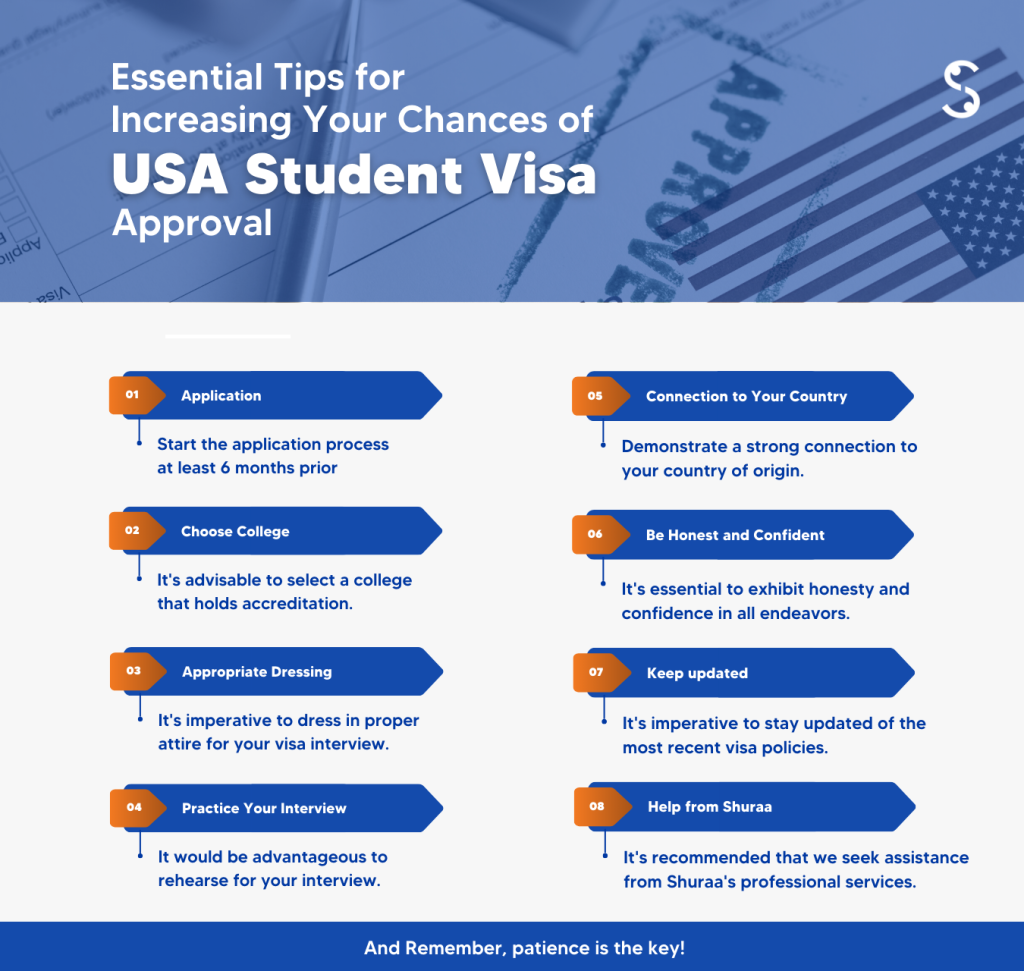
Work Opportunities on USA Student Visa
There are three work opportunities available to international students on a US student visa. Work opportunities will help you earn money to meet the living expenses and provides you valuable work experience in a competitive job market.
1. On-Campus Employment
“F-1 students can work on campus at their respective university or college. They can work up to 20 hours per week during the school year and full-time during the summer holidays.
On-campus employment can be a great way to earn money to offset the cost of tuition and living expenses, and to gain valuable work experience.
To find an on-campus job, students should contact their school’s career centre or international student office.
2. Off-Campus Employment
During the initial academic year, students on an F-1 visa are typically prohibited from working off-campus. However, there are some exceptions, such as for students who have financial hardship or who are participating in a work-study program.
Students approved for off-campus employment can work up to 20 hours per week during the school year and full-time during breaks. Off-campus employment must be related to the student’s field of study.
The two main types of off-campus employment are:
- A) Curricular Practical Training (CPT): This is a type of off-campus employment that is integral to the student’s major area of study. To be eligible for CPT, students must have completed one academic year of study and have a job offer related to their major.
- B) Optional Practical Training (OPT): OPT is a program that allows F-1 students to gain practical work experience related to their field of study. F-1 students can apply for OPT after completing one year of study. They can participate in OPT for up to 12 months before graduation and up to 12 months after graduation.
Want to learn more about the OPT & CPT in the USA? Check out this blog – OPT and CPT USA
Which Work Opportunity is Right for You?
The best work opportunity for you will depend on your individual circumstances and goals. If you are looking for a way to earn money to offset the cost of tuition and living expenses, on-campus employment may be a good option.
If you are looking for work experience related to your field of study, OPT may be a good option.
Also, if you are unsure which work opportunity is right for you, you should consult with your international student advisor.
Cost of Obtaining US Student Visa
The USA Student visa would cost around 45k INR can vary depending the specific U.S. consulate or embassy where you apply, and any additional services you may require.
However, it’s essential to check the current fee on the U.S. Department of State’s website or the website of the U.S. embassy or consulate where you plan to apply, as USA study visa fees may change over time.
In addition to this, there are other fees to consider, including the SEVIS Fee, typically amounting to around $350.
*Please note that these costs are subject to change.
Begin Your US Student Visa Journey with Shuraa Education
Obtaining a US student visa can be a complex and challenging process, but with the right guidance and support, it can also be a rewarding and life-changing experience.
It is crucial to stay informed about the latest visa regulations and requirements to ensure a successful application. That’s where study abroad experts like Shuraa Education can be invaluable.
With an extensive network of prestigious universities and a student-centric approach, Shuraa Education provides invaluable guidance at every step of your application process. We understand the unique challenges that international students may face and can offer tailored assistance to make your dream of studying in the United States a reality.
Don’t hesitate to reach out to us at info@shuraaeducation.com or through a call or WhatsApp at +91 931 999 8925.
Your academic journey in the United States is not just about securing a visa, it’s about exploring a world of opportunities and achieving your educational goals.
Get free guidance to US student visa
Frequently Asked Questions
1. How long does it take to get a US student visa?
Visa processing can take up to 21 working days from the date on which the application is received by the Embassy.
2. Can I extend my US student visa?
It is possible to extend your student visa USA if you need additional time to complete your program of study. However, you will need to provide valid reasons for the extension and meet certain eligibility criteria. To get more info on student visa USA requirements get in touch with the U.S embassy or an educational expert.
3. What should I expect during the visa interview?
During the visa interview, the consular officer will ask you questions about your educational plans in the US, your financial situation, and your ties to your home country. The officer will also review your documents, including your passport, Form I-20, and financial statements.
4. Can I work while on a US student visa?
F-1 visa holders may work on-campus part-time. After completing one academic year, you may be eligible for certain off-campus employment options, like OPT (Optional Practical Training).
5. What is F1 Visa?
The US student visa, specifically the F-1 visa, allows international students to study at accredited institutions in the United States.
Let's Plan Your Study Abroad Journey!
Please leave your details and we will contact you shortly!
Categories
Trending Post
Latest Post
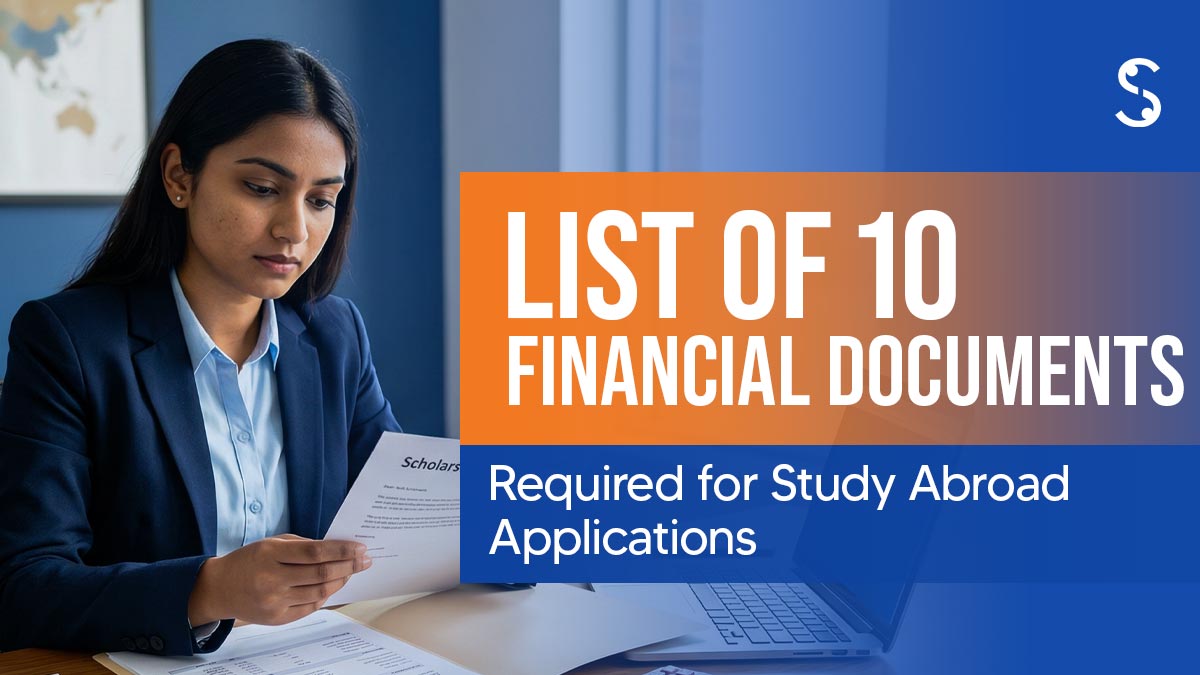
List of 10 Financial Documents Required for Study Abroad Applications
Planning to study abroad is exciting, but before you pack your bags, there’s one critical step you can’t skip: proving your financial readiness. Universities and immigration authorities want assurance that you can comfortably cover tuition fees, living expenses, and other costs throughout your studies. That’s where the financial documents required for study abroad come in. These documents form the backbone of your […]
Read More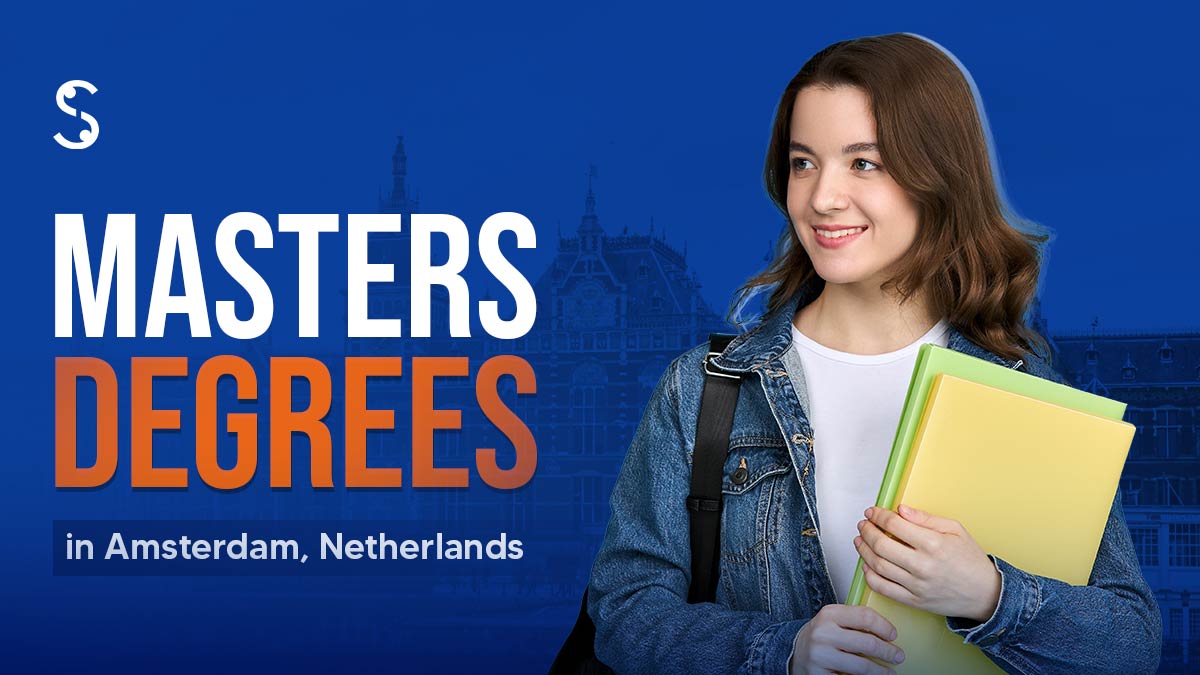
Masters Degrees in Amsterdam, Netherlands
Amsterdam is quickly becoming a favourite destination for students who want a Master’s degree. Unlike some other countries that are getting very expensive or strict, the Netherlands remains open and welcoming. The universities here are ranked very high worldwide, which means a degree from Amsterdam looks great on your CV, no matter where you apply […]
Read More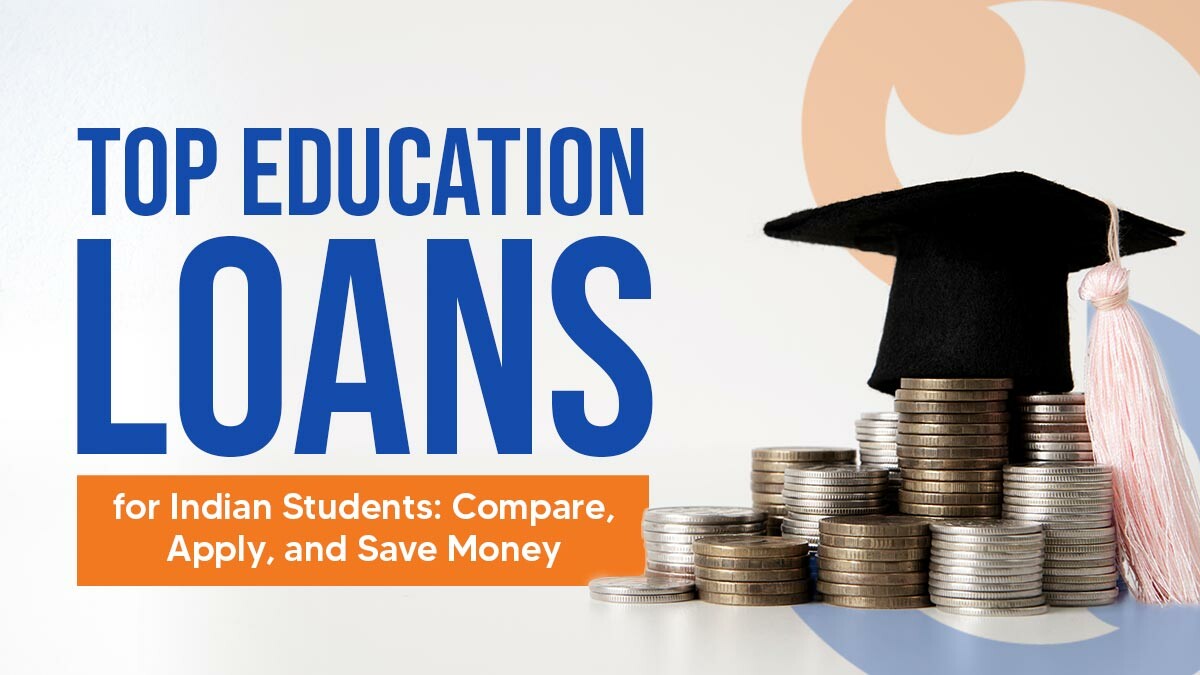
Top Education Loans for Indian Students: Compare, Apply, and Save Money
Studying abroad, or even in India, can be one of the most significant investments in your future. Tuition fees, accommodation, travel, and living expenses can add up faster than expected. That’s precisely where Education Loans for Indian Students play a life-changing role. But with so many banks and lenders offering different interest rates, margin money, […]
Read More
